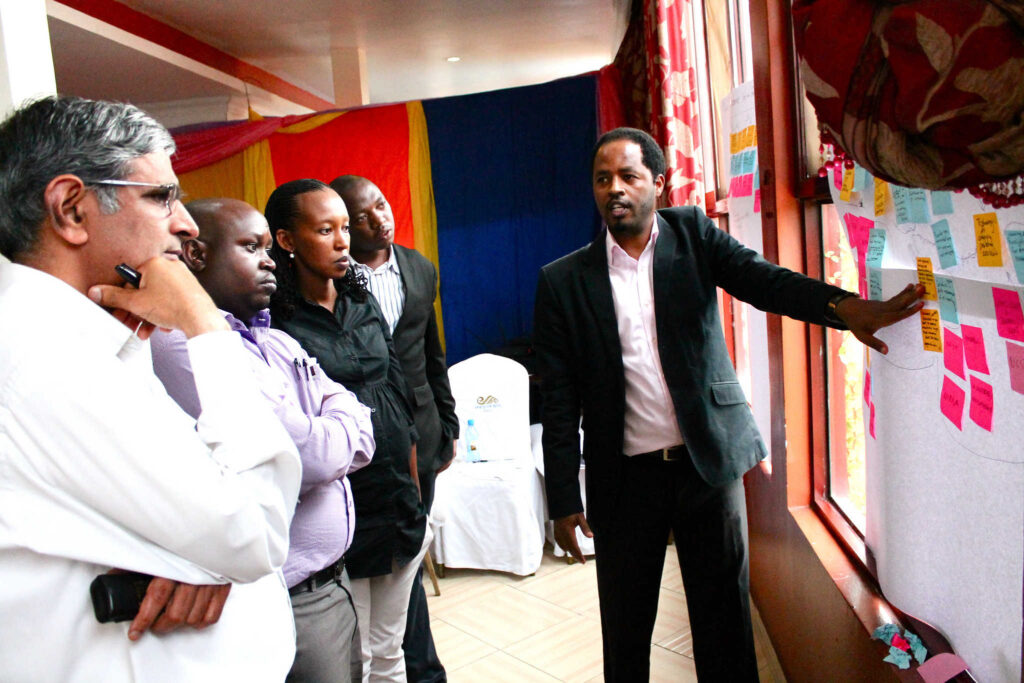How might we measure the impact of collaborating, learning, and adapting on development outcomes?
Supporting USAID’s Understanding and Advocacy of Improved Development Effectiveness
Challenge
Designing and implementing development programs in complex systems has always been difficult. Yet, for many organizations, the task is made harder by adherence to linear thinking, neglect of systems features within the context relevant to the work, and broken feedback loops that connect what’s being planned with what has been tried and learned previously. Seeking to transform how aid is conducted, a small but growing group of practitioners globally is uniting around a call to boost Collaborating, Learning and Adapting (CLA) as essential vehicles for improved development effectiveness and aid outcomes. A group of USAID staff and partners are central to the CLA movement. Like GKI, these practitioners recognize that program strategies, interventions, and partnerships that made sense during project design and launch may quickly be rendered sub-optimal, ineffective, or even irrelevant. Therefore, the ability for programs and organizations to strategically collaborate, continuously learn, and rapidly adapt is crucial to their success. Yet for all of its intuitive appeal, the evidence base for when, how, and to what degree CLA is best used has been relatively thin. Looking at the evidence base for CLA, USAID challenged global development practitioners to join an effort aimed at answering the following questions: Does an intentional, systematic, and resourced approach to collaborating, learning, and adapting contribute to organizational effectiveness? To development outcomes? If so, how? And under what circumstances? How do we measure the contribution?
Solution
Inspired by these questions that underpin GKI’s own mission to boost Collaborative Innovation globally, GKI entered a competition to help USAID amass the critical evidence needed to better understand and program CLA. Selected as one of a small handful of practitioner organizations to partner with USAID on this work, GKI engaged in a 2-year journey to understand how CLA contributes to improved organizational effectiveness and development outcomes. GKI built a case study in collaboration with a Uganda-based agriculture biotechnology organization, BioCrops Uganda Limited, to investigate how CLA can be used to understand the systemic influences on organizational choices and outcomes. The GKI team designed and implemented an engagement process and feedback mechanism to continually research, analyze, and share updates on the system variables that most influence BioCrops’ work. These insights were then shared with BioCrops and, over time, used to assess the extent to which BioCrops adapted its decision-making in response to systemic shifts.
“CLA is essential if your program is to achieve maximum impact—by using feedback loops, you create opportunities to reflect, revise, and adapt. CLA builds human capacity at its core and is critical to development effectiveness.” ~Jake Thomsen, Nigeria Educational Crisis Response
Ultimately, the findings from GKI’s research support USAID’s conclusion that collaborating, learning, and adapting contribute to improved organizational and development outcomes. Moreover:
- Strategic collaboration improves organizational performance.
- Monitoring and evaluation (M&E) are positively and significantly associated with achieving development outcomes.
- Organizations that apply more adaptive leadership and data-driven practices perform better when compared with organizations that focus less on those practices.
Results / Outcomes
- Completed an analysis of Uganda’s Agricultural Innovation system
- Designed a collaborative prioritization process to identify 12 systems enablers and barriers that most influence program outcomes
- Identified investment in building new mindsets (innovative, systems-focused, and growth focused) as key to enabling adaptive action
- Uncovered key conditions that must be in place to enable the practice of CLA methods, including the value of in-person engagement between partners, offering incentives for experimentation and adaptation to offset change management challenges, and eliminating organizational resource constraints
- Recommended that USAID’s CLA Maturity Tool be used as a diagnostic tool during project design to assess an organization’s CLA practice and inform the best methods to evaluate impact
- Presented the option of “adapting away” as a key component of CLA (e.g. it is hard to know when to stop adapting, or adapt “away” from continuing a partnership or program)
Resources
- Feed the Future: Knowledge-Driven Agricultural Development – GKI’s Final Report: Building an Evidence base for Collaborating, Learning, and Adapting
- Evidence Base for Collaborating, Learning, and Adapting – A summary of the literature review done by the Dexis Consulting Group for USAID
- CLA Framework – Collaborating, Learning, and Adapting Framework and Key Concepts




